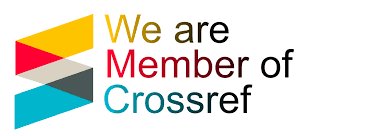INCLUSIVE (INTEGRATED) EDUCATION ENTER ORGANIZATIONAL TERMS
DOI:
https://doi.org/10.63034/esr-208Keywords:
Inclusive education give, Special needs, Pedagogical - corrective measures, Private shooting, Educational models, Social partnershipAbstract
This article discusses the principles of development of inclusive education. Inclusive education identifies children with special needs at an early age and provides them with appropriate pedagogical and corrective measures. It is important to use educational models adapted to the individual characteristics, needs and capabilities of each student. Persons with special needs should be given the right to freely choose educational institutions. The educational environment should be accessible and open to all individuals and their parents. The development of inclusive education requires the coordination of comprehensive medical, social and educational services. It is important to have a comprehensive influence through the interaction of social partnership, various departments and public organizations.
References
Закон РК «О социальной и медико-педагогической коррекционной
поддержке детей с ограниченными возможностями» от 11 июля 2002 г., № 343-II
ЗРК.
Мовкебаева З.А. и др. Методические рекомендации по подготовке
педагогов к внедрению инклюзивного образования. – Алматы, 2013.
Сулейменова Р.А. Методологические подходы к внедрению инклюзивного
образования в Республике Казахстан //Специальное образование в Казахстане. –
– № 2 (23). – С. 25-31.
Сулейменова Р.А., Хакимжанова Г.Д. Зарубежный и отечественный опыт
включения детей с ограниченными возможностями в общеобразовательный
процесс. Проблемы и пути решения. - Алматы, 2001.
Обучение детей с проблемами в развитии в разных странах мира
Хрестоматия / Сост. и науч. ред. Л. М. Шипицина. — СПб., 1997
Published
How to Cite
Issue
Section
Categories
License
Copyright (c) 2024 Кунафина Д

This work is licensed under a Creative Commons Attribution 4.0 International License.





